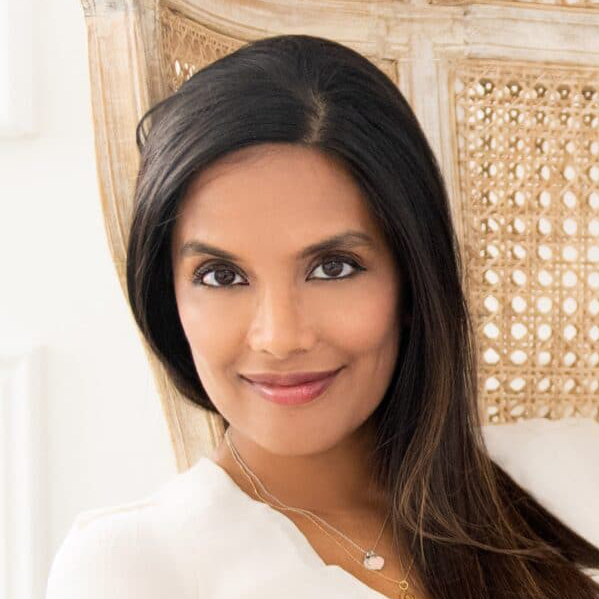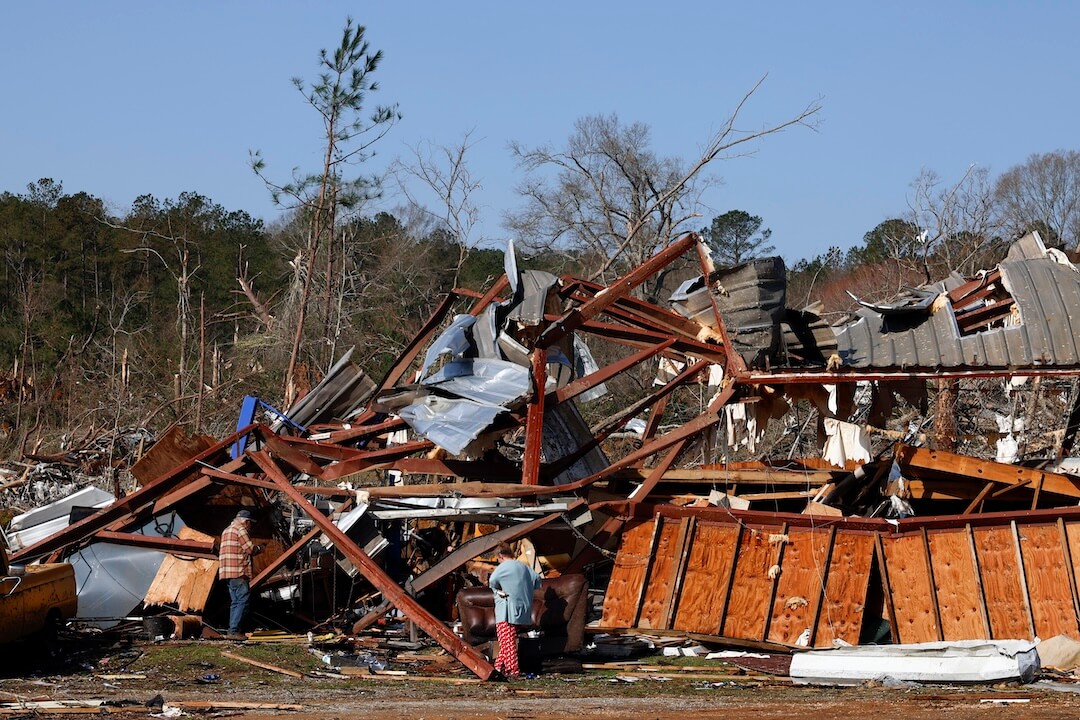Over the span of four long days in September 1918, two leading voices expressed dismay about what was then known as the “Spanish influenza.”
First, Lt. Col. Philip Doane, who led the Health and Sanitation Section of the Emergency Fleet Corporation, “forcefully” voiced that the Germans were behind the epidemic, which had reached American shores earlier in the year. He theorized that German spies may have spilled the virus in a locale where a large number of Americans had gathered, such as a cinema.
“The Germans have started epidemics in Europe, and there is no reason why they should be particularly gentle with America,” Doane opined.
Then, a few days later, another opinion, by Surgeon General Rupert Blue of the Public Health Service — this time in an article in the editorial pages of The New York Times — downplayed the seriousness of the pandemic, suggesting that smallpox, dysentery and typhoid were much more worrisome.
Doane’s statement further fueled stateside anger against the Germans, but may have helped shore up support for the remaining battles occurring thousands of miles away. Blue’s may have swayed public opinion towards not taking the pandemic seriously — and cases across the U.S. continued to rise.
For most of 1918, coverage of the pandemic was dangerously slim, attributed in part to President Woodrow Wilson’s disinterest in addressing it. Most of the coverage in major papers was thus about the war, only occasionally punctuated with statistics about deaths from the epidemic.
But precisely a month after these opinions were aired, the Times changed tack, dedicating over 1,000 words in the Sunday editorial pages to the views of a recent Russian immigrant, a physician, named Dr. Michael A. Iogolevitch, who had both witnessed the epidemic firsthand in Europe weeks earlier and served on the front lines during another flu epidemic 16 years prior.
His opinion was invaluable. For one, he argued that the term “Spanish flu” was incorrect, and that “pulmonary flu” was more appropriate. More importantly, he advised isolating infected cases, ventilation and supportive care; warned against transmission in children; and advised the appropriate use of medications. He also, humbly, lauded the efforts behind finding a vaccine while emphasizing the need to educate the public about disease transmission:
Thanks to the public health officials of this country, you appear to be on the eve of the practical application of a vaccine. … I think your health authorities are on the right track … the public should be made acquainted with the disease through lectures, printed pamphlets, newspapers … in a short time (the public) may be taught the necessary fundamentals of the disease … such as not to cough or sneeze without a handkerchief.
The Times appeared to heed his call. It undertook the key role newspapers play in impacting public understanding of the virus. It increased regular reporting of the pandemic, such as the enforcement of fines to ensure public health guidelines were followed; and educated the public on the promise of vaccine research, all while warning them against ingesting “cures” that could “do more harm than good” (la plus ca change!). Portions of advertising space were also reallocated to public health messages that encouraged readers to wear masks and follow disinfection recommendations.
That said, despite experts suggesting the pandemic had ended, and it was the time to reflect on learnings, transmission took a long time to curtail: After 50 million deaths, almost 700,000 of which were in the U.S., the last case was detected in April 1920.
Arguably, Iogolevitch’s views were influential in shaping how the Times and other newspapers reported on the pandemic, which then impacted public understanding and opinion, all which collectively helped drive widespread behavior change.
This illustrates that during a pandemic, it’s not just the reporting on the pandemic that matters — the opinions shared by experts also matter.
The impact of contrarian opinions
Over the last 18 months, with the influx of thousands of op-eds focused on the pandemic, we’ve seen the impact of airing contrarian opinions.
In March 2020, a viral piece published in the Times by David Katz, a physician with expertise in nutrition, called for keeping businesses open. A few days later, then-President Donald Trump used the same language from the piece to justify the administration’s inaction. This didn’t go unnoticed, suggesting that the op-ed may have, to some degree, either influenced Trump’s choices, or was used to justify his a priori plans.
One year later, an article in The Atlantic by the economist Emily Oster was similarly perplexing: another argument for a “laissez-faire” approach to pandemic planning, this time applied to children. The blowback by infectious disease physicians and epidemiologists was huge, taking the form of an ad hoc scientific peer review online (disclosure: I consult for the Twitter health design team to support more productive disagreements online). And while the author issued a clarification on social media, the article itself still lacks a correction. It became weaponized by libertarians, and more recently, used in a testimony (and subsequent appeal) against mask mandates for children in Florida.
Further, in early September, another op-ed, by oncologist Vinay Prasad, called into question masks for children, only having been met by similar blowback by epidemiologists and pediatricians. His claims could potentially be weaponized by anti-maskers. In that case, while “children are not little adults” is an adage in pediatric medicine, which often applies to drug dosing, that doesn’t typically apply to standard practices like helmets, masks, seatbelts and so forth. The potential trade-offs are worth it to prevent transmission at a time when pediatric cases, hospitalizations and deaths are surging in this vulnerable unvaccinated group. Yet Florida Gov. Ron DeSantis’ successful appeal last week may have benefited from this counterpoint narrative.
But the issue here goes beyond any one self-described expert’s opinion. To make it solely personal is to fail to see the underlying problem. This dilemma has less to do with any specific individual, and more to do with the processes in place among newsrooms across the country to vet these opinions, including who deserves a platform (and who doesn’t), and whether the opinion offered is supported by sound data, all on top of the traditional challenges readers may face when discerning meaning from opinion journalism.
A different approach to opinion journalism
The idea to separate opinion from news is credited to the founder of the New York Tribune, Horace Greeley. Now there are codes of ethics for opinion journalism, and some newsrooms have their own. But this is complicated by the fact that most readers still have a hard time distinguishing between news and opinion. Efforts to label sections as “ideas” and “essays” may not always help with this distinction, particularly if they are written by an individual that “appears” to be an expert on pandemics.
At a time when editors may be burnt out, but when readers still expect quality data-informed advice, and when ad hoc scientific “peer review” on social media has limited impact, we need a different approach, one that addresses the two main problems.
First, to what degree is expertise and credibility required when opining about an active pandemic, especially on policies by the Centers for Disease Control and Prevention, and how best can editors determine this?
Second, during an active pandemic, should the publication standards for pandemic-focused op-eds be higher, knowing that the consequences of readers integrating this information can be immense, potentially even impacting pandemic prediction models themselves?
The first issue involves expertise and credibility. A common argument made by epidemiologists and infectious disease experts against the Oster, Prasad, and Katz op-eds are that they shouldn’t have been published because the writers lacked the specific expertise in the area they were commenting on. This is an appropriate criticism. We wouldn’t turn to an infectious disease expert to advise us on the economy of the country, the best chemotherapy protocol for a form of breast cancer, nor how national nutrition policy should be overhauled.
But this criticism doesn’t heed the value of what “outsiders” — nonscientists and scientists alike — offer to the public conversation. Dr. Michael Iogolevitch, despite being a physician, was an outsider by virtue of being a new immigrant who wielded no power compared to Surgeon General Blue or Lt. Col. Doane.
Moreover, we need only turn to Rachel Carson’s “Silent Spring” as self-evident. Carson was a citizen scientist, not an expert on environmental pollutants or human health, yet her outsider perspective helped shift public opinion, including that of countless scientists who resided in echo chambers, some who were unduly influenced by industry, and were altogether unable or unwilling to see their blind spots.
Echoing American philosopher Thomas Kuhn, Carson spoke to the defining feature of science being that it evolves, including in her book an elegant quote from Johns Hopkins professor Carl Swanson, that “others” are crucial to that evolution: “Science may be likened to a river … it gathers momentum with the work of many investigators and as it is fed by other streams of thought; it is deepened and broadened by the concepts and generalizations that are gradually evolved.” As Philip Tetlock has written extensively about, experts are often blind to gaps in their understanding, which justifies why we need humble non-experts in the room.
As such, the downfall of all three of these op-eds, is at least in part that they lacked intellectual humility, that is, the clear idea that their view is one of an outsider having appraised the evidence, but that it is subject to change as understanding evolves. Indeed, if high-quality traditional journalism is “balanced,” so too should opinion journalism. It should be forceful yet flexible, especially so with opinions that run counter to established public health recommendations.
The second issue is whether an active pandemic necessarily raises the standards for pandemic-related opinion journalism. This is specifically the case now where major news outlets are cosplaying as the main source of public health information, given the limitations on traditional authoritative bodies like the CDC.
Compelling opinion journalism is supported by data and evidence. But who exactly is the judge of this evidence? Unlike peer-reviewed science, the judges — editors in this case — often do not have the deep expertise to scientifically appraise the quality of evidence used in an article. They can’t be expected to. Alas, that judgment rests primarily on the individual submitting their opinion, and their self-assessment of both expertise and ability to appropriately apply the data.
The Katz op-ed was not buttressed by relevant scientific data, which was perhaps expected given that the pandemic was in its earliest weeks and such data was not available.
As several infectious diseases experts pointed out, the Oster op-ed used sound economic modeling assumptions, but extrapolated these assumptions to epidemiological data (the crux of the concerns raised involved the conclusions perceived as erroneous).
With the Prasad op-ed, as his critics pointed out, the overreliance on one small trial that wasn’t replicable and lacked external validity rendered his main argument thorny. But what’s particularly puzzling with Prasad’s op-ed is that he co-wrote an excellent book that describes these very research limitations in compelling detail, and why they often lead to medical reversals.
A similar issue around assessing expertise and the application of evidence is present in the justice system with medical expert witnesses. Some states leave the judgment of medical expertise, and the application of scientific evidence, to a jury and judge who typically lack scientific training. Others leave the determination to the expert’s professional peers. Both are imperfect.
During a pandemic, the stakes of misjudging expertise and the appropriate application of data are high. One poorly supported opinion can be used to justify inaction or disobedience, which could then fuel higher transmission rates. Failing to have high standards effectively poses the same harm as the Tom Cotton op-ed controversy, but the consequences to flawed public understanding may be more dire and traceable, through the larger ripple effect on cases, hospitalizations and deaths.
These two points — on expertise and standards — inevitably run against arguments around free speech and censorship. It harkens back to another pressing issue in 1918, which was President Woodrow Wilson’s concern that contrarian opinions about the war, namely anti-war sentiment, could pose a risk to the populace. This led to the passing of the Sedition Act of 1918, which also covered which opinions would be voiced in the media (including newspaper editorial pages). The justification was that the common good of winning the war was held in higher esteem as compared to any individual’s right to protest against the war publicly.
Seen as extreme, Supreme Court associate justice Oliver Wendell Holmes put forth a test the following year for assessing whether the Sedition Act could be applied, the “Clear and Present Danger Test” (emphasis mine):
The question in every case is whether the words used are used in such circumstances and are of such a nature as to create a clear and present danger that they will bring about the substantive evils that Congress has a right to prevent. It is a question of proximity and degree. When a nation is at war many things that might be said in time of peace are such a hindrance to its effort that their utterance will not be endured so long as men fight, and that no court could regard them as protected by any constitutional right.
Notably, the COVID-19 pandemic has been likened to war by the very nature that it requires collective action and cooperation in order to defeat the enemy named SARS-CoV2. Holmes’ attempt was to create a more objective way of measuring when free speech should be curtailed for the sake of the war, and more broadly for the public good (of note, libertarian sentiment against pandemic regulations was uncommon in 1918, possibly because the broader libertarian value around winning a war, and the associated freedoms, was perceived more salient).
How to reconcile expertise and standards
So how might we reconcile these two broad issues?
First, ideally, newsroom opinion sections should have at least one editor with scientific training and experience in critically appraising research studies to provide insight around if a submission, regardless of the author’s titles, is supported with valid data. As this may prove difficult, investing in training opinion editors to be better judges can help fill in the gaps. (Trainings are offered by the National Association of Science Writers.)
Second, creating a standard rubric for opinion editors to help assess a given “expert” op-ed would help. As a scientific peer reviewer, I’ve often followed these, which could be adapted for pandemic-focused op-eds. Such a rubric could include a variation of a “clear and present danger test” — applicable to potentially hateful views as much as those that could pose a public health risk.
Third, newsrooms should regularly publish and make available explainer guides to help educate readers on scientific media literacy.
Fourth, where clarifications or corrections (or even a revision of a prior opinion) are offered by the writer, as with the Oster example, editors could publish this as an update to the article itself.
Fifth, whether it’s opinion or traditional journalism, caution should be heeded on any article that offers a crystal ball — whether around herd immunity, whether to plan social events next season, or when/how the pandemic will end. At a time when readers are looking to news outlets for certainty, the temptation by newsrooms to provide this is strong. We don’t know how this pandemic will end, and no expert opinion or conscientious science journalist, albeit well-meaning, knows either. Certainty remains elusive, but the most accurate pandemic forecasts are made a bit like the weather: a week or two at a time, a diminishing return on this accuracy the further out we go. The news media must continue to normalize this, as well as normalize that the understanding of SARS-CoV2, as with all science, will evolve, so the recommendations and messaging will too (which doesn’t equal flip-flopping). Reporting that helps place the pandemic’s trajectory in context, and guides readers’ thinking will continue to prove extremely useful.
For readers who are turning to these pages for hope but also prudent expert guidance, a healthy acceptance of the uncertainty that all of us — expert or not — are grappling with, as well as the limits of forecasting, will help undo some of the pressure many editors face to meet that need in their outlets. And, of course, subscribe and support these outlets.
Heed those who lack a platform
The original title of this essay was “What Silence Springs,” a play on words of Carson’s book title. My goal was to underscore a crucial last point.
I’d be remiss to omit the fact that oftentimes the most knowledgeable and experienced people lack the platform to lend their expertise, or are implicitly (or explicitly) silenced, which is fertile ground for overconfident voices to take the lead.
As with other professions, the journalism world struggles with a bias towards a certain kind of journalist or expert. My volunteer work mentoring several academics through the Op-ed Project only further cemented that meritocracy remains an ideal. When it comes to opinion journalism, it’s on editors to ensure that it isn’t just the loudest (often self-proclaiming) experts who are provided with a platform for their views and ideas, but those with demonstrated expertise, humility and thoughtfulness, as they often add immeasurable value to the public conversation — perhaps, especially, those voices that remain underrepresented primarily because they are excluded.
An outsider, but one that held herself to the same standards of scientific evidence as her more decorated academic contemporaries, Carson demonstrated that the evidence-based opinions of a non-expert can indeed shift the public’s perception of the most pressing issues of our time.
She once proclaimed: “Wonder and humility are wholesome emotions, and they do not exist side by side with a lust for destruction.” Though Carson was referring to how humans experience our natural world, the same might be applied to opinion journalism. A reader’s sense of wonder is rooted in noticing how differently another might understand crucial issues. We are often humbled if that perspective is novel enough to change our minds. We also value that which is rare, which is why we pay attention to contrarian views.
But this wonder and humility, in its truest sense, cannot be derived from arguments that are ultimately destructive by virtue of being unsupported by the evidence.
During a pandemic, where millions of citizens, and their leaders, base (or justify) their actions on what they read in news sources they trust, it’s simply a pattern we cannot afford to repeat.
A version of this article originally appeared on Elemental, a publication from Medium for science-backed health and wellness coverage.







